As Highway 120 enters Tuolumne Meadows, Yosemite National Park, at the far end (top of the photo below) is Lembert Dome.
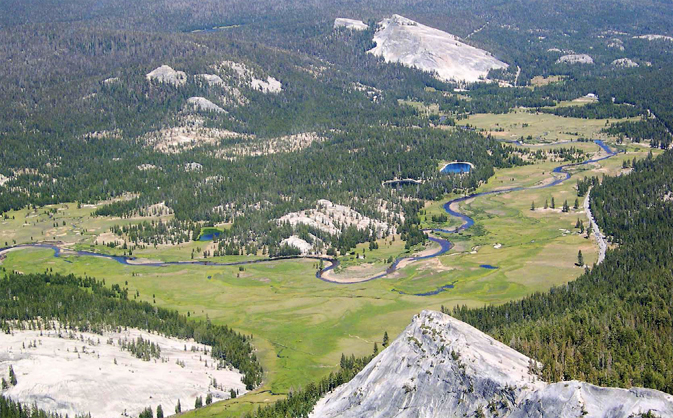
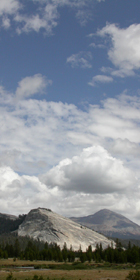
The view above from this end of the dome does not show its highest part, but from the campground view of the south side you can see that it rises in three increasingly higher levels.

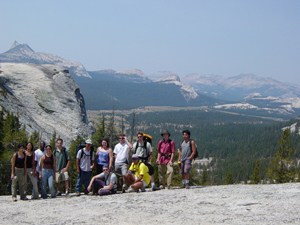


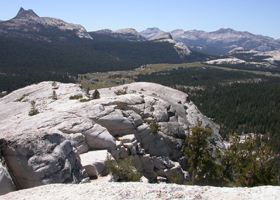
Here, a telephoto view down to the meadow and river:
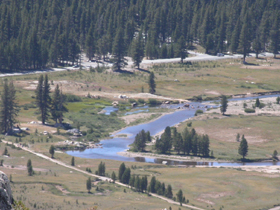
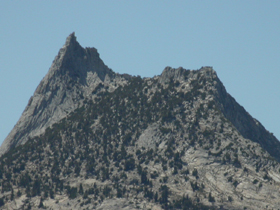
Here, a telephoto view of the glacier on Mount Lyell:
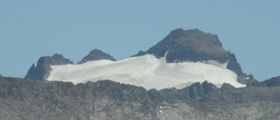
_____________________________________________
Global warming is real! Check out these August 14, 1903 and August 14, 2003 photos of the Lyell Glacier melt:
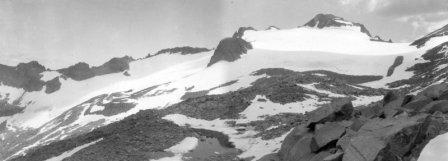
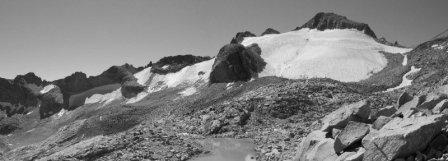
The second photo was taken by Hassan Jules Basagic IV for his masters thesis (used with his permission).
Yosemite Berann poster of Tuolumne Meadows, Tenaya Lake, Cathedral Peak, Clouds Rest, Tioga Pass, Mount Hoffmann, Mount Conness, Mount Dana and Mount Gibbs (with Lembert Dome in about the center above the words Tuolumne Meadows) -poster courtesy of NPS:

_____________________________________________
Enhance your hike by reading:
The day hike gear section at Camping equipment checklist
The National Park Service often warns hikers :
“Avoid becoming dehydrated or experiencing heat exhaustion. Drink plenty and drink often; pace yourself; rest in the shade; eat salty snacks.”
“Replace sodium lost through sweat by supplementing your water intake frequently with salty, easily digested snacks, such as trail mix or nuts.”
Avoid salt tablets, as they can irritate your stomach and cause nausea and/or vomiting, can raise blood pressure, cause stomach ulcers, and seriously affect people with heart disease.
This advice from Grand Canyon National Park applies to any hike:
Avoid Huffing and Puffing
IF YOU CAN TALK WHILE YOU ARE WALKING, YOU ARE WALKING THE PERFECT SPEED.
When you huff and puff your body is not getting enough oxygen. Walking at a pace that allows you to be able to walk and talk means that your legs and your body are getting the oxygen needed to function efficiently.
When your body generates fewer metabolic waste products, you enjoy your hike more and you feel better at the end. At times it may seem like you are walking too slow, but at an aerobic pace (sometimes even baby-sized steps when the trail is steep) your energy reserves will last longer. You will also feel much better that night and the next day.
Take a Break
TAKE A TEN MINUTE BREAK AT LEAST ONCE EVERY HOUR.
A break of ten minutes helps remove the metabolic waste products that build up in your legs while hiking. Take a break at least every hour. Sit down and prop your legs up. Eat some food, drink some fluids, and take this time to enjoy and appreciate the view. These efficient breaks can recharge your batteries. In the long run, breaks will not slow you down.
Thunderstorm and lightning safety includes the answer to the question: Why can’t you swim during a lightning storm? A strike on a lake doesn’t kill all the fish in the lake.
Here a NPS photo of lightning hitting Lembert Dome:
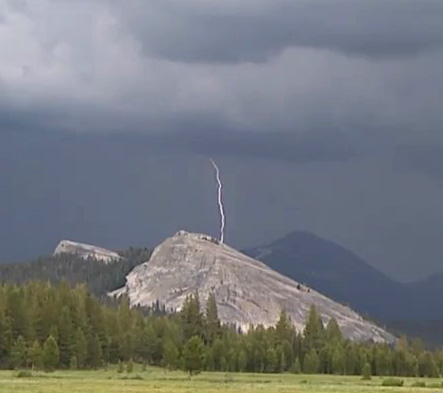
At altitude you will probably feel out of breath at first and may even get a headache and lose appetite. You can get more sunburned. Your tent mate might seem to stop breathing.
Top reasons not to speed in a National Park
The use of cell phones for photography (with or without a selfie stick) has made preventable injury
or even death by selfie common
They were just taking a selfie . . .
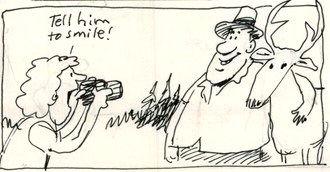
see also: Cell phones in the wilderness which has advice on how/when to use a cell phone to contact 911 in the wilderness and a warning about interference between cell phones, iPods and avalanche beacons.
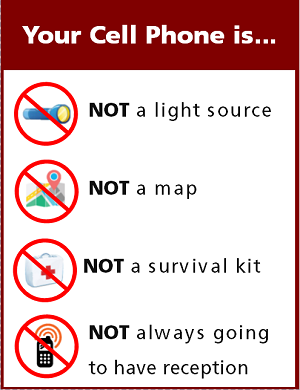
 You can’t always expect a helicopter rescue
You can’t always expect a helicopter rescue
Depending on a GPS unit to intentionally be separated from your hiking partners can lead to confusion or even disaster. Be certain that the people you are with are happy with this prospect. GPS is not infallible
Can a person who is prescribed an epi-pen risk going into the wilderness? and some sting prevention notes are at: Anaphylaxis quick facts
Hiking Advice has hot weather hiking advice, hiking logistics and the answer to the question: When is the best time of day to cross a mountain stream?
Enhance your drive to the park: Road trip advice and etiquette
Safe distances from wildlife
The author of this webpage, (written as a homework reading assignment for my students), does not give any warranty, expressed or implied, nor assume any legal liability or responsibility for the accuracy, completeness, or usefulness of any information, product, or process included in this website or at websites linked to or from it. Users of information from this website assume all liability arising from such use.